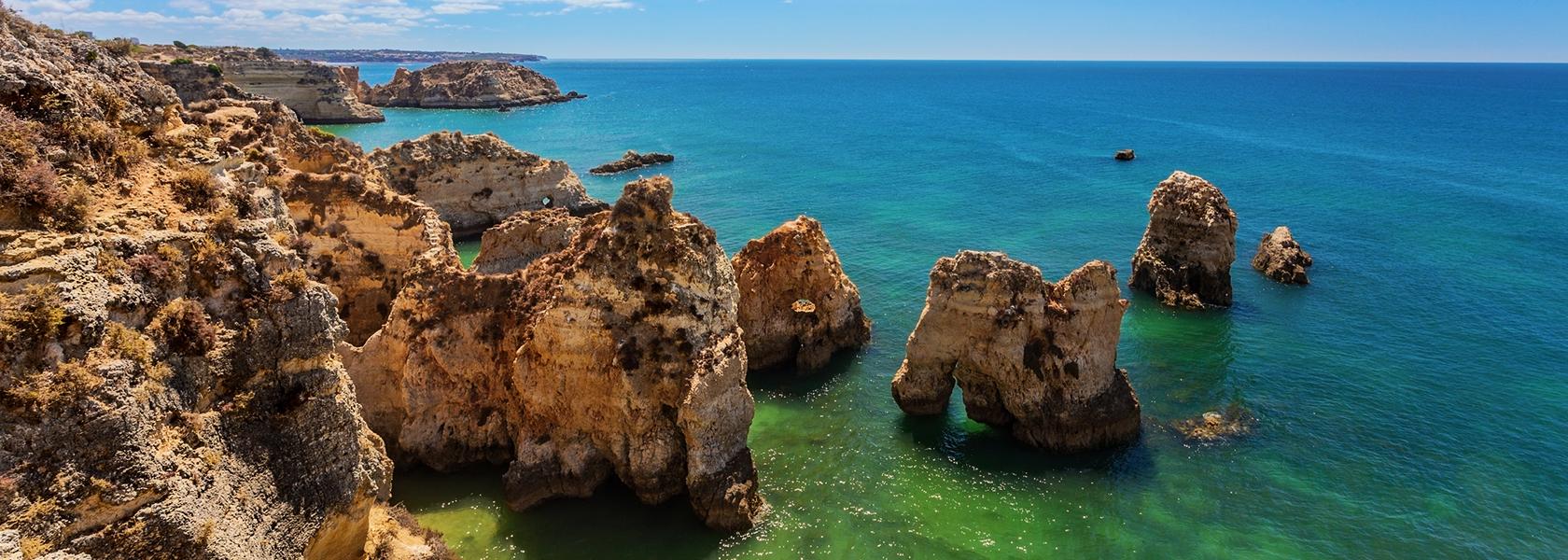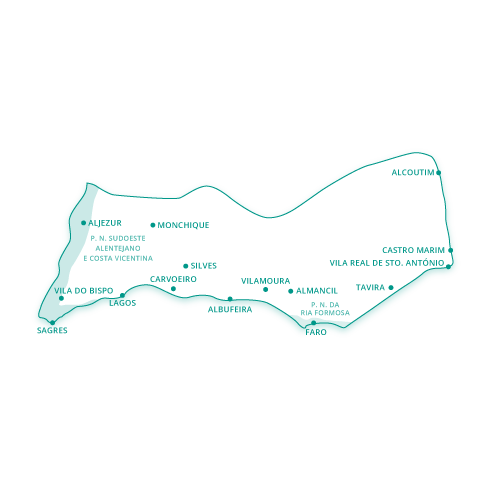Travel GuideAlgarve
Algarve
The Algarve is a totally different region from the rest of mainland Portugal. It is a province with very individual and distinctive geographical, climatic and cultural characteristics. Shaped like a rectangle, it ends at the coast in the south and west, in a chain of mountains (Caldeirão, Monchique) in the north and in the east the River Guadiana forms a natural border with Spain. Its name derives from “Al-gharb al-Andalus” meaning “West Andalusia”, which is the name Arabs gave to the region. In 1249, King Afonso III conquered the Algarve from the Arabs after six centuries of Islamic occupation. The Arabs left many remains, as the Romans had done before them.
The Algarve has three sub-regions, corresponding to three biotypes. Firstly, there is the coast, with its magnificent beaches and, nowadays, a significant amount of tourism. However, this also includes some protected areas, such as Ria Formosa, an estuary of great zoological importance, or the coastal area of the Costa Vicentina (the coast stretching north from Sagres to Odeceixe) with its very specific geography, flora and animal life. The second sub-region is called the Barrocal which is still today an agricultural area that has many orchards. This area of flat land rises slowly until it becomes the third sub-region, the mountains, where the main activities focus on forestry and dams.
The Algarve, with its tepid, calm, almost Mediterranean, waters and extensive beaches is perfect for all types of beach activities. Here you can go to the beach from March to November, making it especially attractive for people used to colder climates. No wonder the Algarve is the Portuguese region where the largest number of foreign citizens including the British, German, Dutch and Scandinavians, choose to live.


